
Please click on the image and refer to the image metadata page for copyright and licensing information.
Some poisonous plants of Tennessee
About this page
This page is designed to present some general information about poisonous
plants that may be commonly found in the southeastern U.S. It is not
intended to be comprehensive or authoritative.
Never eat any part of any plant unless you are
confident of your identification and of your knowledge that the part of the
plant is safe to eat!!!
For more authoritative information and treatment advice, contact the
Tennessee
Poison Center at 1-800-222-1222
Quick links: Don't touch
Notorious poisons
Precautions
Edible plants
Herbal remedies
Plants that are "poisonous" to the touch
There are several plants that are irritating to the touch or which cause an
allergic reaction for many people. Although annoying, these plants are
native and an important part of the natural ecosystem in southeastern forests.
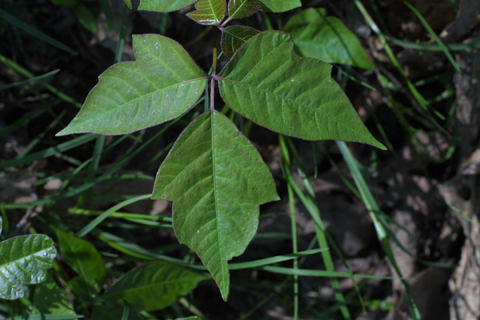
Poison ivy
(Toxicodendron radicans) The most common and well-known irritating plant in this
area is poison ivy. It can grow as a
groundcover or as a
"hairy" vine climbing up
the bark of trees. Skin contact with the any part of the plant can result
in an allergic response that causes itching red spots and blistering.
Washing thoroughly with warm soapy water can reduce the likeliness of a reaction
if you have touched the plant. Poison oak is a similar species with the
same effects.
The three, toothed leaflets of poison ivy may be confused with
box elder (Acer negundo).
However, box elder is a freestanding tree and has leaves that are
opposite on the stem
rather than alternate like poison ivy.
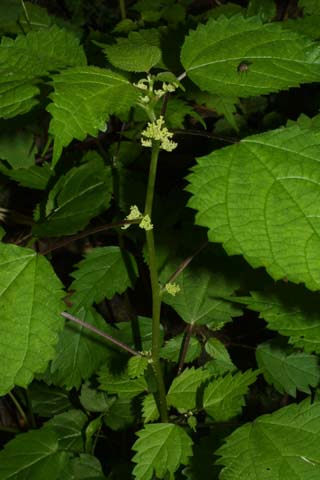
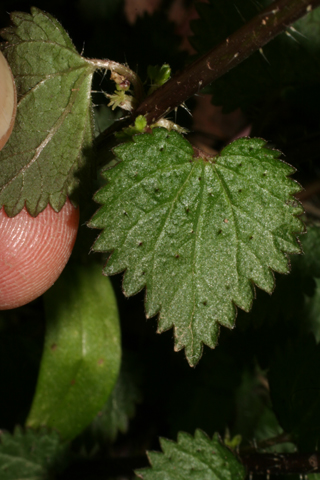
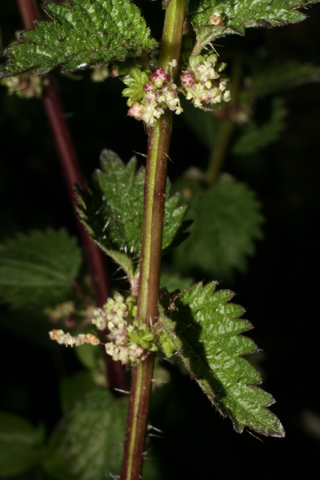
Nettles (left: woodnettle Laportea canadensis, center and right:
stinging nettle Urtica
chamaedryoides) have stinging hairs on their stems and leaves which can
produce a short-lived stinging or burning sensation when brushed against.
Notoriously poisonous plant
families
Apiaceae ("umbellifers", the carrot family)
Despite the presence of celery and carrots in this family, many members of
the family are highly poisonous.

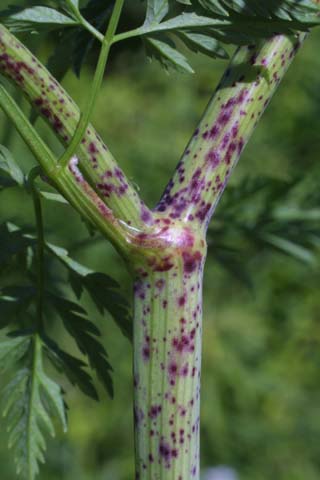
Poison hemlock (Conium maculatum)
is probably the most famous poisonous member of this family. Although not
native to the United States, it has become established here and is a fairly
common roadside weed. This particular plant was growing along the road
near my home in middle Tennessee. It can grow up to 3 meters (10 feet)
tall and is easily recognized by the purple splotches on its stem. Contact
with this plant can cause dermatitis, so wear gloves when pulling it.
The plants fame comes from its use in the execution of the famous Greek
philosopher, Socrates, who was made to drink an extract from the plant.
Poison hemlock should not be confused with the tree,
eastern hemlock (Tsuga canadensis)
which is relatively harmless. Eastern hemlock is a dominant tree in the
Smoky Mountains and is sometimes planted as an ornamental.
Solanaceae (nightshade family)
Again it is ironic that several important foods (tomatoes, peppers, and
potatoes) are members of this otherwise deadly family. Its most famous
member, deadly nightshade or belladonna (Atropa
bella-donna) is native to Europe and isn't normally found in Tennessee.
However, there are other common poisonous representatives in this area.
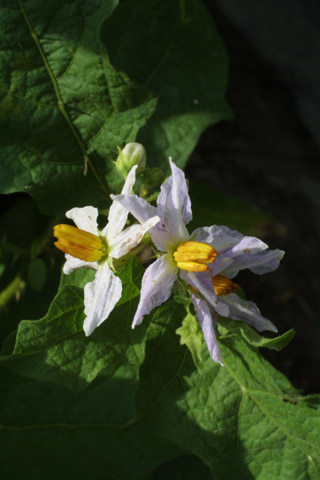
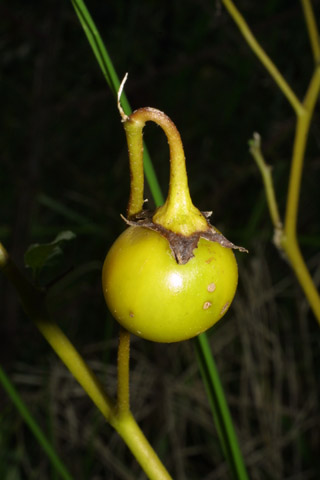
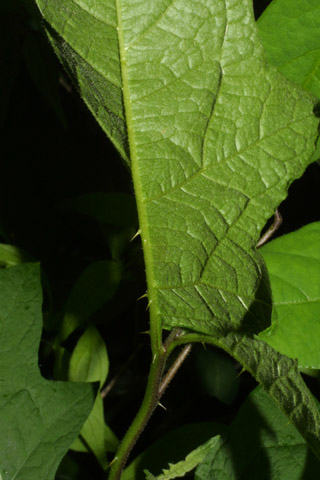
Horse nettle (Solanum
carolinense) is a common native roadside weed that is found throughout
most of the U.S. I photographed this flower by my mailbox. It is
pretty easy to recognize when in its white or purple flowers are visible.
It is also notable for its spiny stems and the spines on the bottom of the
leaves. The yellow berries could be mistaken for an unripe cherry tomato
and cause severe poisoning. The plant may irritate your skin, especially
if the skin is scratched by the prickles.



Jimson weed (Datura stramonium)
is a common pest weed in agricultural areas, roadsides, and waste places.
It is easy to recognize and the fruits (which look like a medieval weapon) are
unmistakable. People are regularly poisoned by eating its seeds.
Some general points about poisonous
plants:
There are many other poisonous plants that grow wild in the southeastern U.S.
You can learn to recognize many of them with a good field guide, such as
Wildflowers of Tennessee (Jack Carman, 2001). You can be concerned
about the safety of yourself and your children and still have a great time
enjoying plants in the outdoors if you remember a few main points:
What wild plant parts can I safely
eat?
Common berries such as blackberries, raspberries, blueberries, and mulberries
are fairly easy to recognize and many are very tasty. But make sure that
you know how to identify them before you eat them. All of these berries
are generally found on woody trees or shrubs, and many are black or dark blue
when ripe.
What about herbal remedies and
supplements?
Many of the important drugs we use today can trace their origin to herbal
remedies of the past. So obviously, some herbal remedies may have
medicinal value. However, herbal remedies are not required to undergo
stringent testing like therapeutic drugs, which must be shown to be safe and
effective before they can be marketed.
It is a misconception that things that are "natural" are more safe to use.
Some of the most deadly poisons known to humans come from natural sources,
including plants.
Before taking any herbal remedies, do careful research into the known risks
associated with the herb. Ask your doctor whether taking it may introduce
complications related to conditions that you may have or cause harmful
interactions with drugs that you are taking.
Written by Steve Baskauf, Ph.D., August 2006












